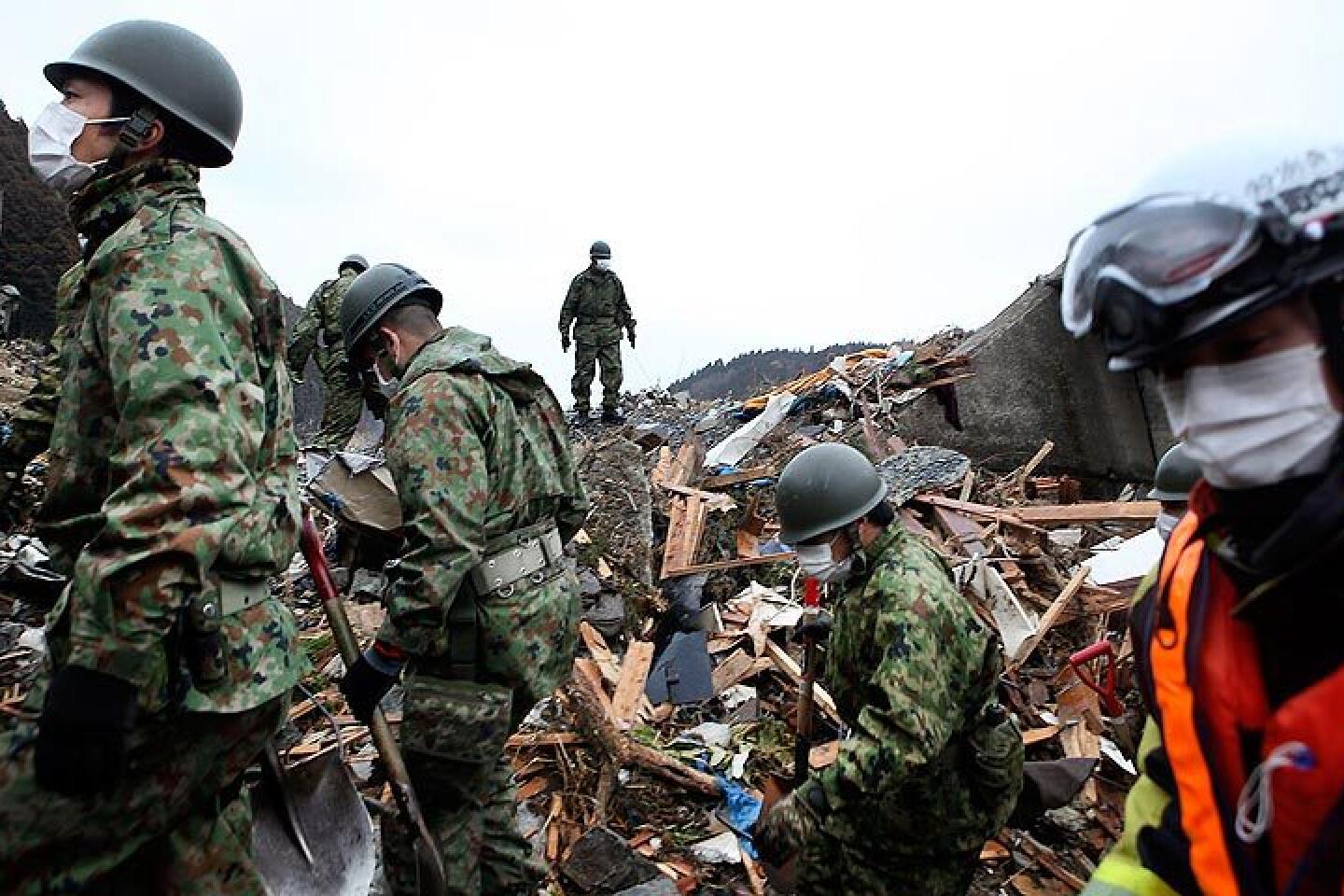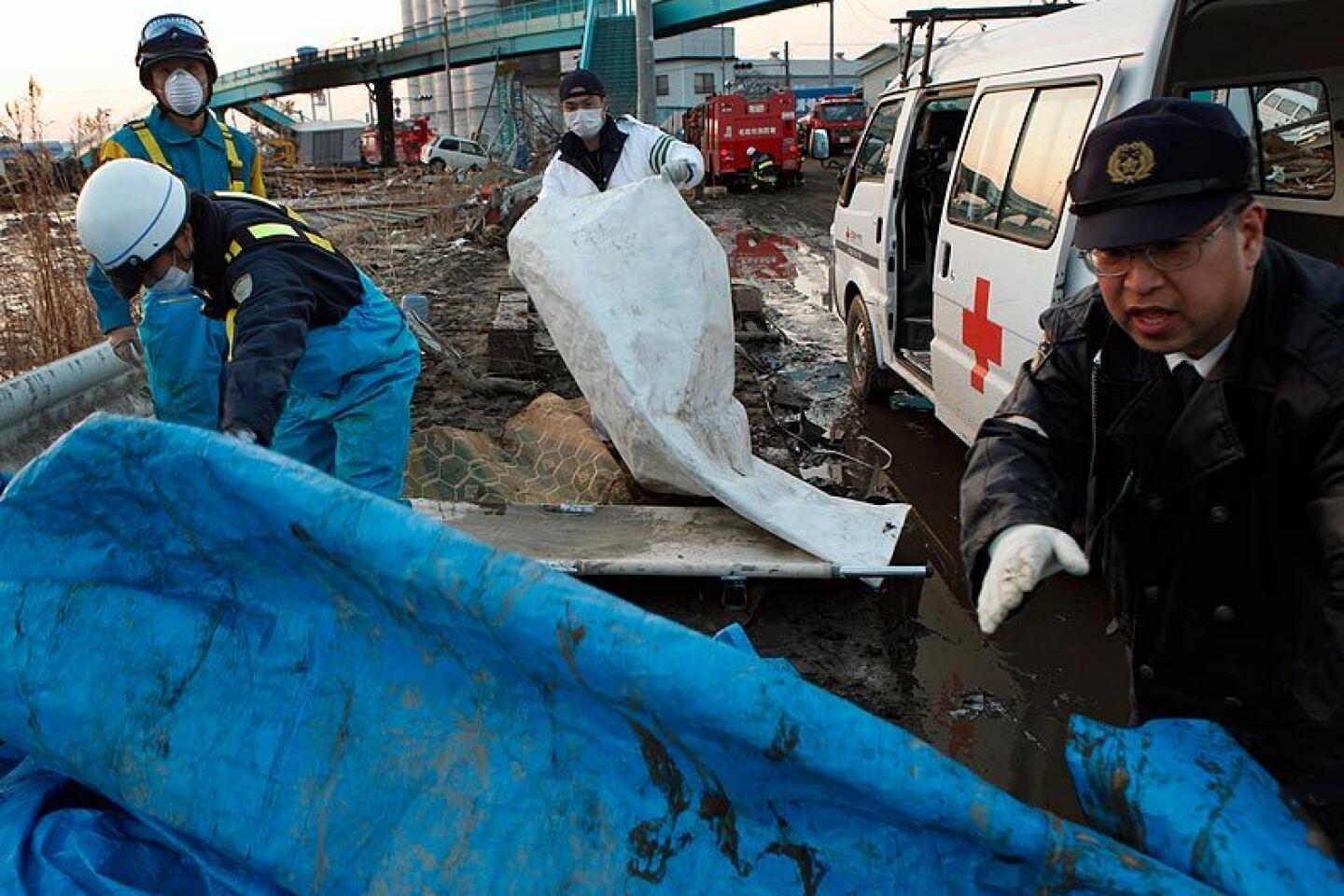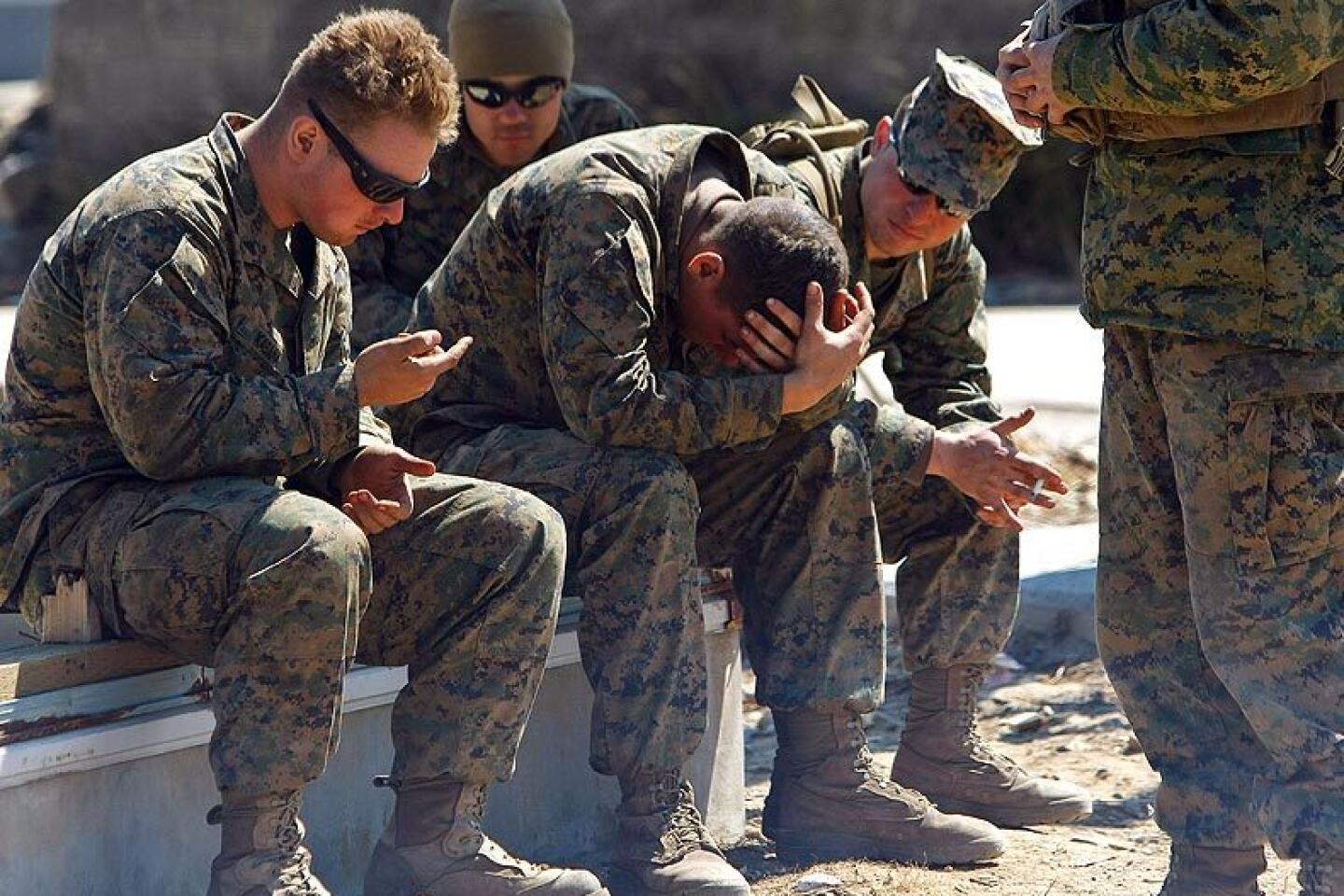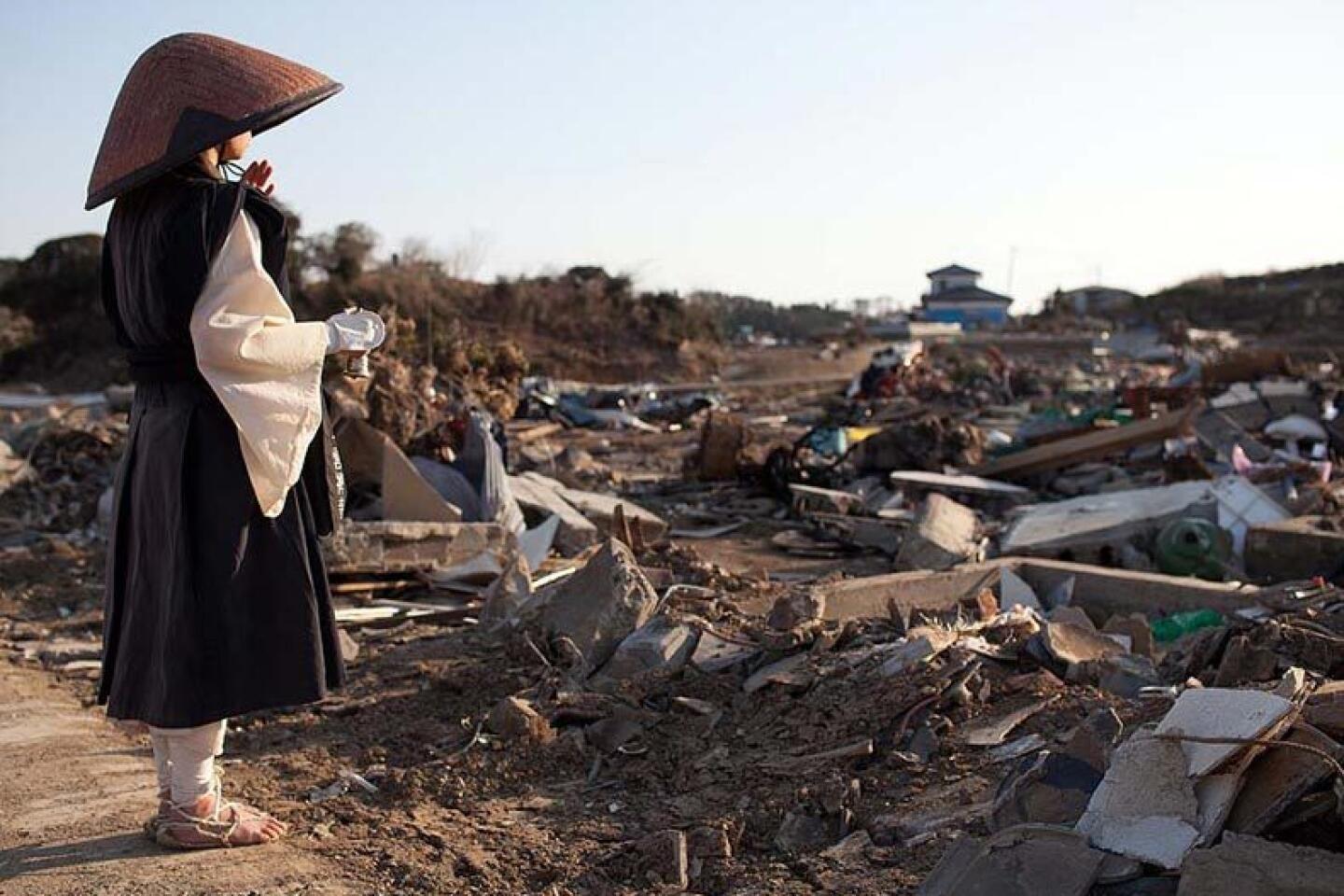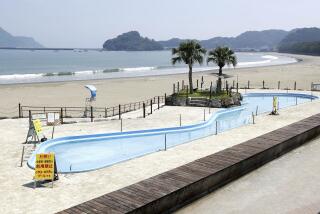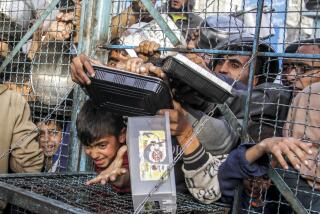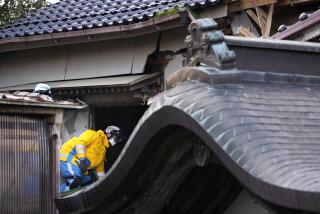Japanese perplexed by slow quake response
Reporting from Tokyo — The calls came into Tokyo’s metropolitan government soon after the March 11 earthquake and tsunami. What can we do to help, some asked. Others, seeing shocking television video of people homeless and desperate for food, urged officials to take up a collection.
“Many people said, ‘I have a child too. I want to do something,’” recalled Kazutoshi Matsuura, a department head at Tokyo’s Welfare and Health Agency.
But it was a full week after the initial devastation when the first truckload of donated diapers, bottled water and other essentials gathered by volunteers and municipal workers left central Tokyo for the worst-hit areas along the northeast coast.
Time had ticked away as 20 metropolitan department chiefs put their heads together; half a day was lost just getting approval for storage space for donated goods. Rules on how to pack boxes cost precious more hours.
The story of what happened between the first public calls for the city to rise to the occasion and the delivery of aid is in some ways the story of the puzzling slowness that has characterized Japan’s overall response to the magnitude 9 earthquake and tsunami.
Weeks after the disaster struck, officials and relief workers say the basic needs of most people in shelters are being met, with many volunteers helping with cleanup as convoys loaded with water and even portable showers rumble along coastal roads.
But for a super-organized, wealthy nation that made “just-in-time” delivery famous, the not-so-in-time response stunned many people and angered those in need.
“Every decision has come too late,” said Souichiro Tachibana, 50, a schoolteacher who watched his house burn down the night after monstrous waves swept through Miyako, in Iwate prefecture.
Japan’s national government has acknowledged that it could have moved more quickly in dispensing crucial information and supplies. The slow response at the local level has also prompted some self-examination within the Tokyo city government, which lacked a system to accept and distribute donations.
“If you say why not earlier, maybe we could have done it,” said Matsuura, 56, who is directing the emergency relief efforts.
It wasn’t for a lack of hard work in Tokyo’s dimly lighted metropolitan government building in Shinjuku. Employees like Matsuura have been putting in 14-hour days, even with blackouts and aftershocks continuing to sway the 48-story tower where he works. And to be sure, some delays would have been expected, given the enormity of the disaster. Roads were closed. Gasoline was scarce. People were panicked.
But it didn’t help that the Tokyo municipal government had little experience with such relief efforts. Although the city has long had an emergency plan for the day the big one hits, it was never prepared to help people hundreds of miles away, and it did so only because of the groundswell of demand from its citizens.
“It’s not typical in Japan to help each other this way,” said Eiichi Honda, a retired Nestle marketing executive in Tokyo, referring to personal donations to be distributed to strangers.
“We work together, but for your own group,” said Honda, who is pastor of an evangelical church in the Tama ward of greater Tokyo.
Despite that, Japan’s Red Cross has collected about $1.2 billion since March 11 to help in quake and tsunami relief, but has not yet paid out any money.
Other cultural factors also may have hindered a more rapid aid response: The national penchant for keeping order, following rules and moving with the group. Though these traits help explain the unusual civility and organization at evacuee centers, the same patient, consensus-building and by-the-book mentality does not lend itself to speed.
“Japanese are good at going by the textbook,” observed Kit Miyamoto, who runs a structural engineering firm in West Sacramento and has long studied earthquakes in California and Japan. But for a disaster like this, he said, “you have to be unbelievably flexible, make quick decisions and go.”
After driving up and down Japan’s battered northeast coast in the first week after the tsunami, Miyamoto couldn’t help but express frustration over the dearth of supplies that had reached survivors. Other foreigners in a hurry to get to hard-hit areas complained that their driver wouldn’t go faster than the 50-mph speed limit, even when the highway was almost empty.
Nezih Altay, a DePaul University business professor who studies humanitarian relief and supply-chain activities, said Japanese corporations may be famous for their just-in-time system, but that has to do with managing inventory, not decision-making.
“Basically, just-in-time works great in status quo,” Altay said, “but if any disruption and disturbance happens, just-in-time becomes a burden.”
Matsuura, a 34-year veteran of Tokyo’s municipal social services, makes no apologies.
“We’re a big organization,” he said. “It took time to decide whether to bring the idea [of setting up a donation effort] to the meeting.” And that first required getting all 20 of the department heads to come together, he said.
Once on the agenda, he said, the decision was made quickly. But there were other steps. Matsuura needed an area large enough to store collected items, but that space was managed by the city’s Finance Department, nine floors below. With some elevators knocked out, Matsuura’s staff went up and down the stairs to work out the approvals. That took half a day.
Matsuura’s staff put advertisements in newspapers and on television asking for donations and volunteers to help with sorting and packing. Five volunteers showed up on the first day. By day’s end, there were enough diapers, masks, water and heating pads for a shipment to go out.
Then came another snag. After the truck pulled in, the driver refused to accept the bags of diapers carefully tied together with string. They had to be put in boxes. “It’s a rule,” the driver said.
Matsuura instructed the staff members to undo the packaging and box the diapers.
For all the delays, Matsuura said he was gratified by the public support. In the first four days of collection, he said, more than 500 volunteers turned up, sorting and boxing more than 6,600 bags of diapers, half a million face masks and more than 20,000 bottles of water. People also dropped $90,000 into a donation box.
Dressed in the city government-issued blue-and-green jacket, Matsuura sat in his 24th floor office recently, reflecting on the lessons learned. The floor swayed with an aftershock as he spoke.
“It’s the first time we had such a big disaster,” he said. “There’s no manual” for what they did.
A smile creased his tired face. “It’s not complete, but now we have the know-how.”
Times staff writer Mark Magnier, recently on assignment in Miyako, contributed to this report.
More to Read
Sign up for Essential California
The most important California stories and recommendations in your inbox every morning.
You may occasionally receive promotional content from the Los Angeles Times.

